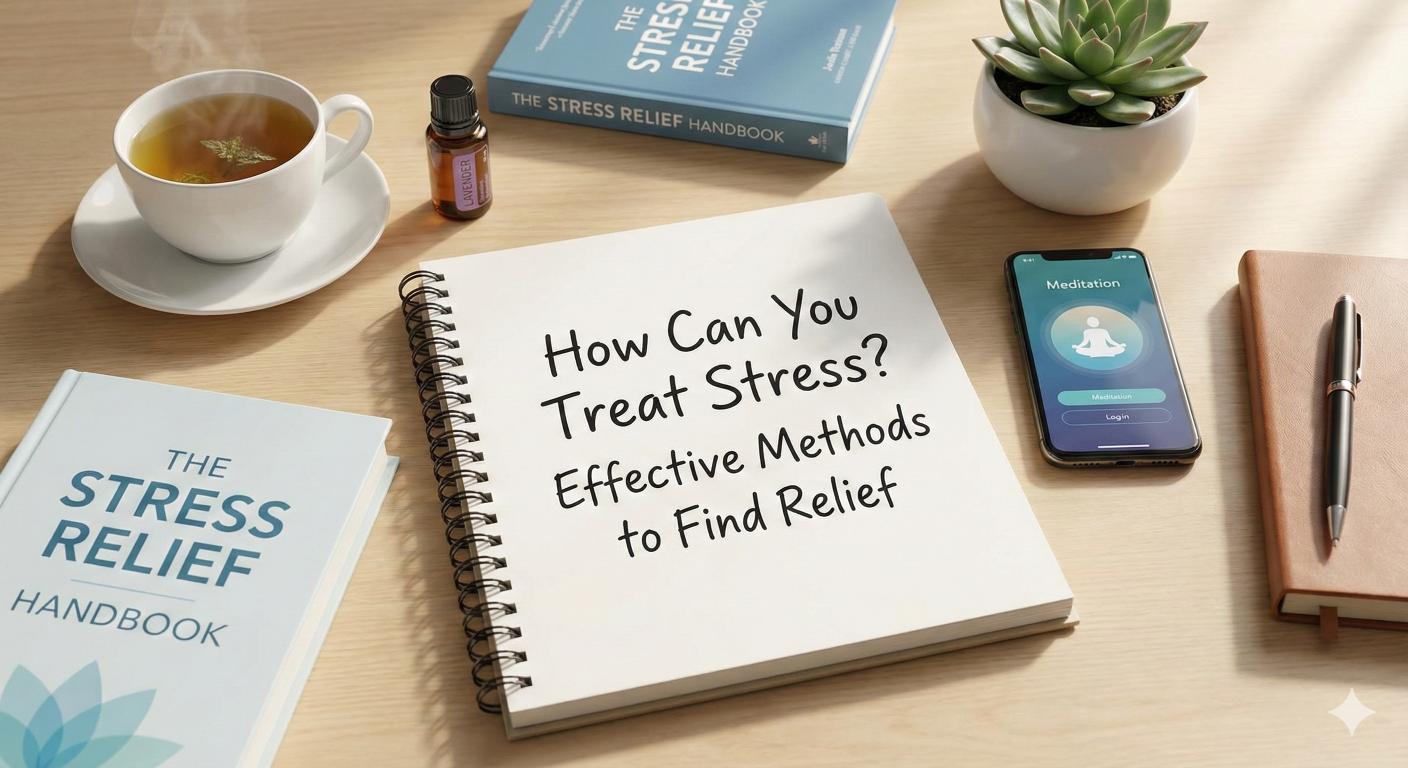How Behavioral Health Services Address Social Anxiety
Breaking Down the Role of Behavioral Health in Combating Social Anxiety

Understanding Social Anxiety and Its Impact
Social anxiety disorder (SAD) is a prevalent mental health condition characterized by intense fear of social interactions and negative evaluation by others. Affecting approximately 5% to 10% of people worldwide, SAD often begins during adolescence and can significantly impair daily functioning, relationships, and occupational success. Recognizing and addressing social anxiety through behavioral health services is crucial to improving the quality of life for those affected.
The Nature and Manifestation of Social Anxiety Disorder
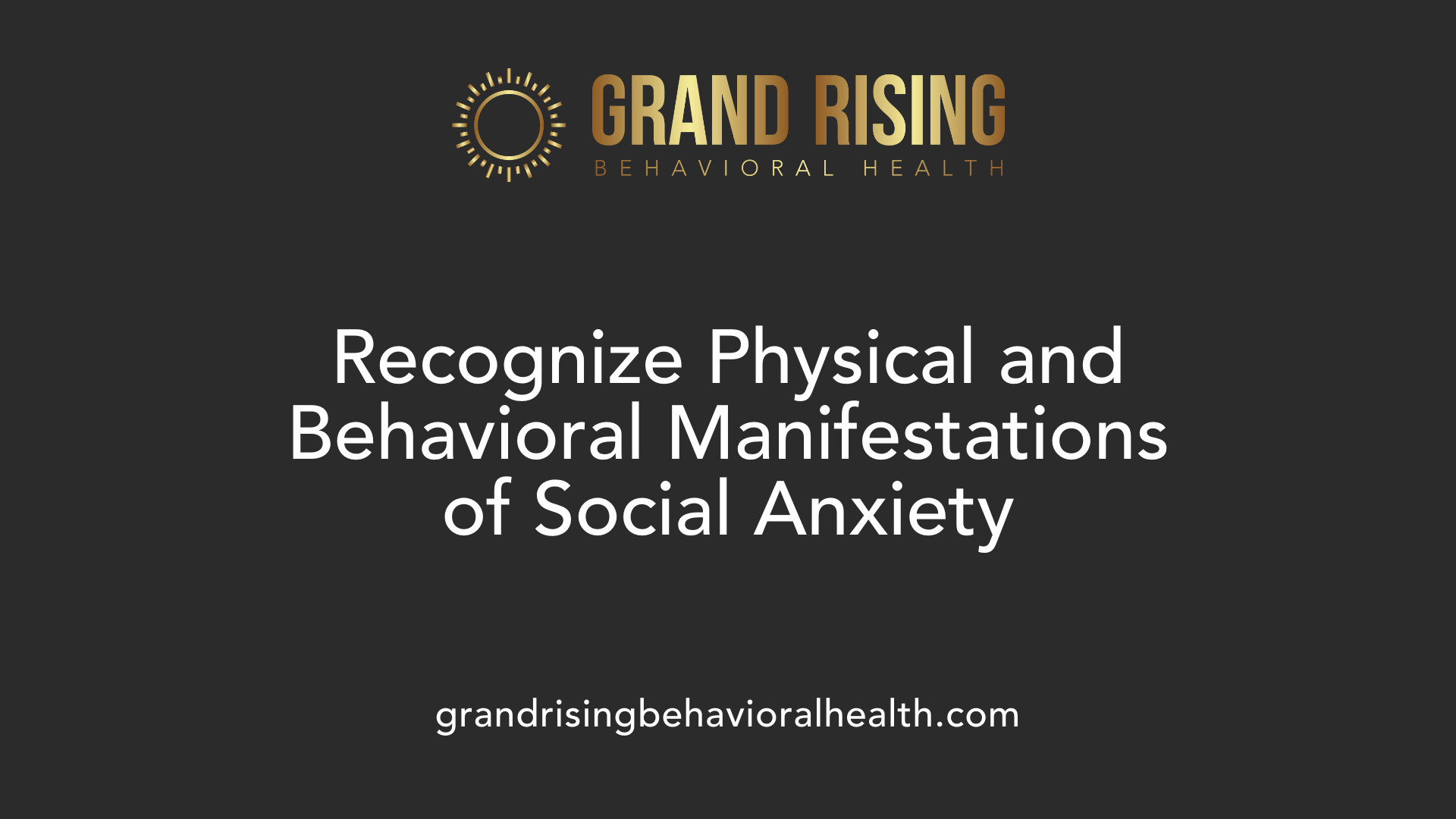
Symptoms and signs of social anxiety
Social anxiety disorder presents with a variety of symptoms that can be both psychological and physical. Individuals often experience an intense fear of being judged, scrutinized, or rejected in social situations. This fear persists over at least six months and can significantly interfere with everyday activities.
Key psychological symptoms include excessive worry about future social interactions, feelings of self-consciousness, embarrassment, and a tendency to overthink social judgments. People may constantly anticipate negative evaluations, which heightens anxiety and avoidance behaviors.
Physically, sufferers often display signs such as blushing, sweating, trembling, rapid heartbeat, dizziness, and nausea. These responses are involuntary and may be overestimated by the individual, making the social situations seem even more intimidating.
Behaviorally, individuals tend to avoid social gatherings, public-speaking engagements, or even casual conversations. They may also experience a strong urge to escape social settings when feeling overwhelmed, or endure such situations with intense distress.
Physical and behavioral manifestations
The physical signs of social anxiety include blushing, sweating, trembling, and a rapid or irregular heartbeat, often accompanied by nausea or dizziness. These symptoms can occur unexpectedly or in anticipation of social encounters.
Behaviorally, avoidance is common. People with social anxiety might decline invitations, miss work or school events, and limit their social interactions whenever possible. Some may develop safety behaviors like avoiding eye contact, speaking very softly, or using distraction techniques during social contact.
Duration and severity thresholds
To be diagnosed with social anxiety disorder, symptoms must be present for at least six months and cause significant distress or impairment in social, occupational, or daily functioning. The severity can range from mild, where social situations cause discomfort but not overwhelming, to severe, where avoidance and fear dominate daily life.
In mild cases, individuals may still participate in social activities but with anxiety. In more severe forms, they may withdraw entirely, leading to social isolation and impacting mental health, sometimes resulting in depression or substance abuse.
Recognizing these symptoms and understanding their persistence helps in timely diagnosis and effective treatment, ultimately improving life quality for those affected.
Diagnosing Social Anxiety: The Behavioral Health Approach
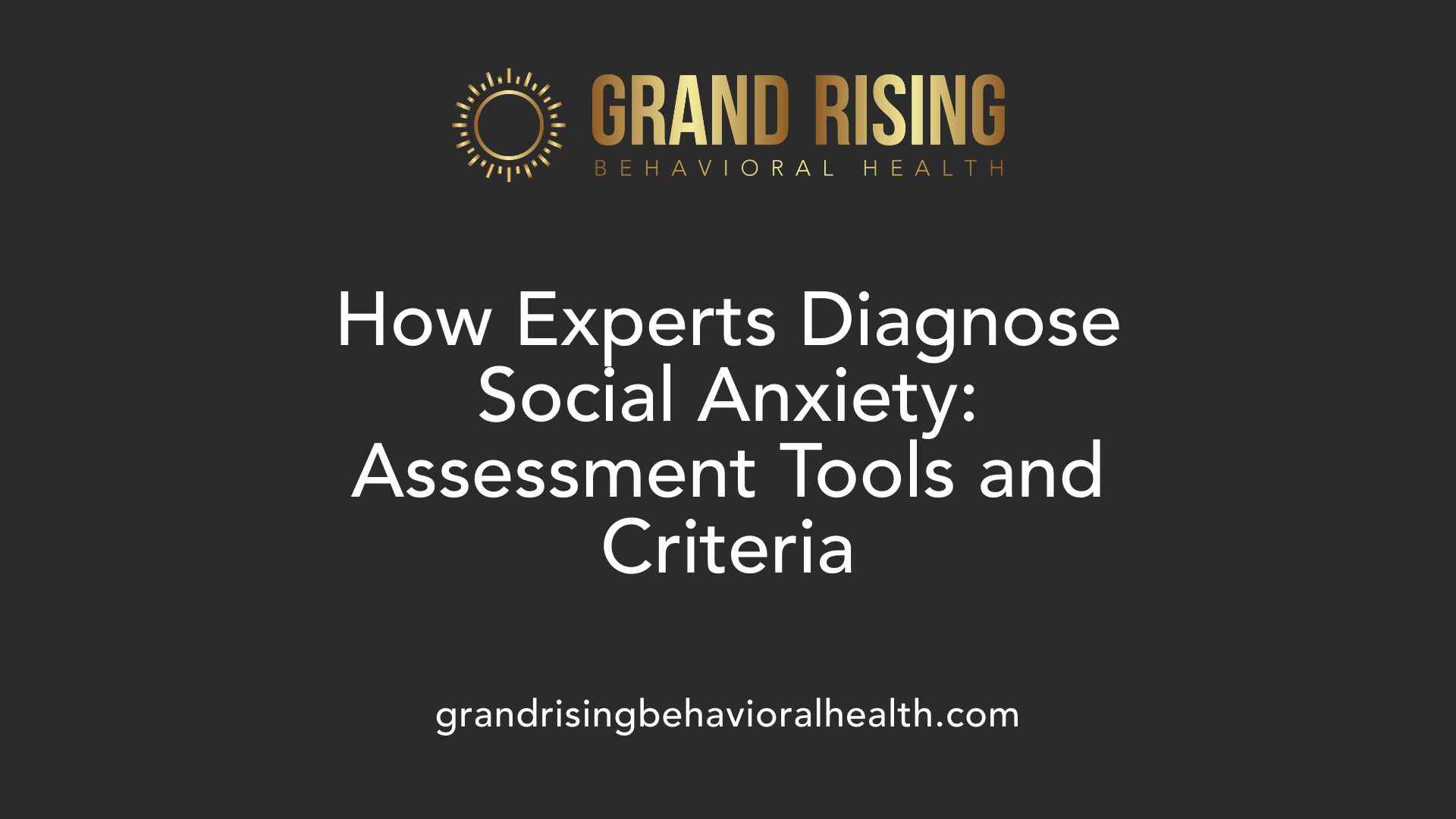
How is social anxiety diagnosed and assessed within behavioral health services?
In behavioral health, diagnosing social anxiety disorder involves a detailed clinical evaluation conducted by a qualified mental health professional. The diagnosis is primarily based on the criteria outlined in the DSM-5, which require the presence of persistent fear or anxiety about social situations for at least six months. This fear must be intense enough to interfere with daily routines, relationships, or work.
To support accurate assessment, clinicians often employ standardized rating scales such as the Liebowitz Social Anxiety Scale (LSAS) and the Social Phobia Inventory (SPIN). These tools provide objective measurements of symptom severity, helping determine the extent of social anxiety and distinguish it from other mental health conditions like general shyness or avoidance behaviors.
The process typically includes a thorough interview, review of medical history, and self-report questionnaires. Physical examinations may be performed to rule out other causes of symptoms, such as medical conditions. Using these methods ensures a comprehensive understanding of each individual’s experience, which is essential for developing effective, personalized treatment plans.
| Assessment Tool | Purpose | Description |
|---|---|---|
| Liebowitz Social Anxiety Scale (LSAS) | Measures severity of social anxiety | Evaluates fear and avoidance in various social situations |
| Social Phobia Inventory (SPIN) | Assesses social anxiety symptoms | Provides quick screening and severity rating |
Accurate diagnosis allows clinicians to tailor treatment strategies, including psychotherapy options like cognitive-behavioral therapy (CBT) and appropriate medication, which are proven effective in managing social anxiety disorder.
Treatment Modalities: Psychotherapy and Medication
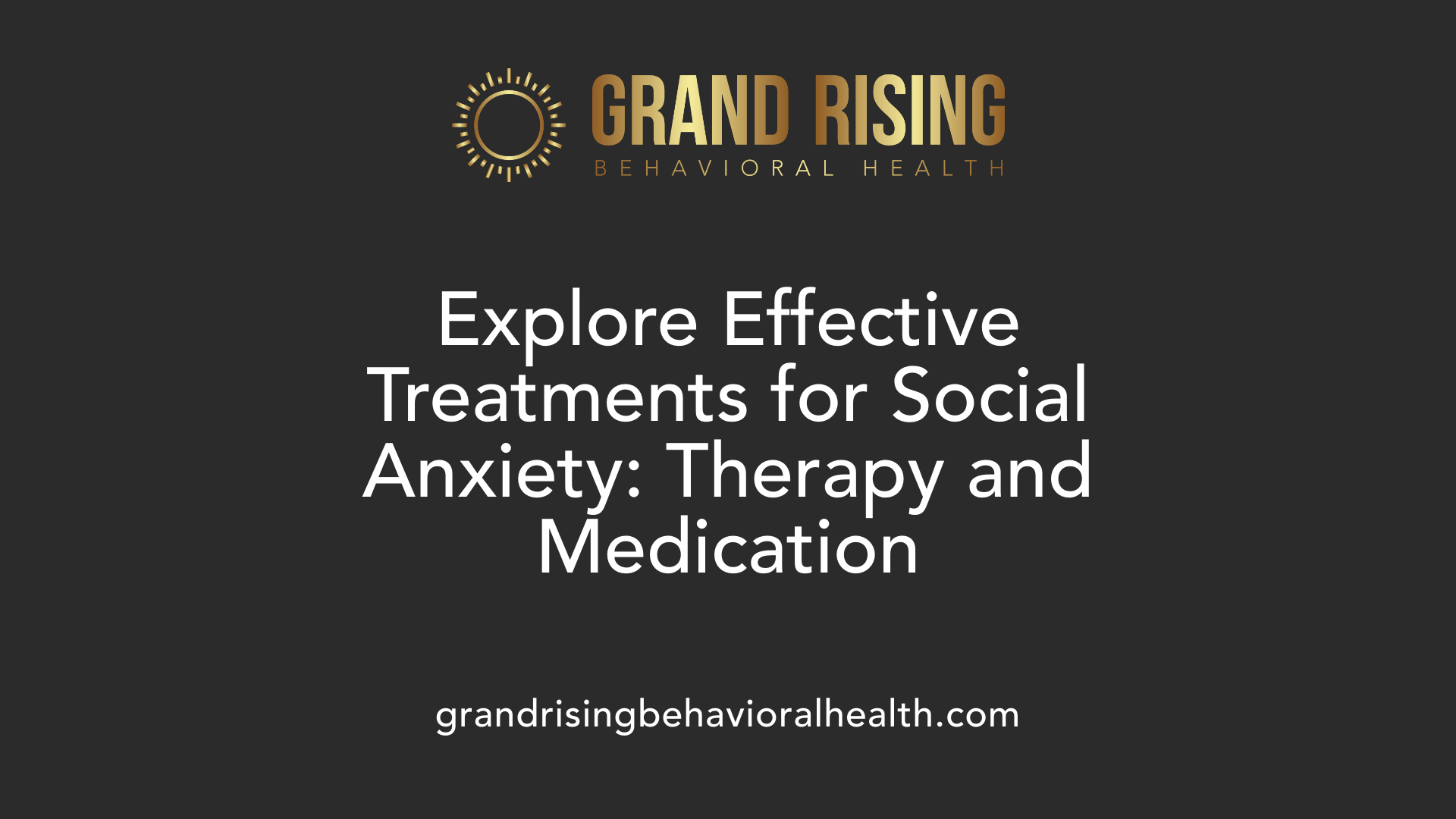
What treatment options and approaches are available for social anxiety disorder?
Managing social anxiety disorder typically involves a combination of psychological therapy and medication, tailored to meet the individual’s specific needs.
Psychologically, cognitive-behavioral therapy (CBT) is considered the most effective treatment. This evidence-based approach helps individuals identify and challenge negative thoughts related to social situations. Therapy often includes skills training, cognitive restructuring, and exposure exercises that gradually confront feared social scenarios, building confidence and reducing anxiety.
Several models of CBT, such as those following Clark and Wells or Heimberg, are recommended as first-line psychological interventions. These models emphasize understanding and modifying the thought patterns that fuel anxiety, using techniques like behavioral experiments and social skills training.
In addition to psychotherapy, medications are frequently prescribed to alleviate symptoms. Selective serotonin reuptake inhibitors (SSRIs), including sertraline and paroxetine, are among the most common, helping to regulate serotonin levels associated with mood and anxiety. Serotonin-norepinephrine reuptake inhibitors (SNRIs) like venlafaxine also show effectiveness.
For physiological symptoms such as rapid heartbeat or trembling, beta-blockers—such as propranolol—may be used, especially in situational anxiety like public speaking.
Often, a combined treatment approach yields the best results. This includes ongoing psychotherapy sessions alongside medication management, personalized based on the severity of symptoms and patient preferences.
Customizing treatment plans involves careful assessment by healthcare professionals to determine the most appropriate combination of therapies, monitor progress, and adjust as needed. Overall, these strategies significantly improve functional outcomes, reduce symptoms, and enhance quality of life for those affected.
The Power of Cognitive-Behavioral Therapy in Managing Social Anxiety
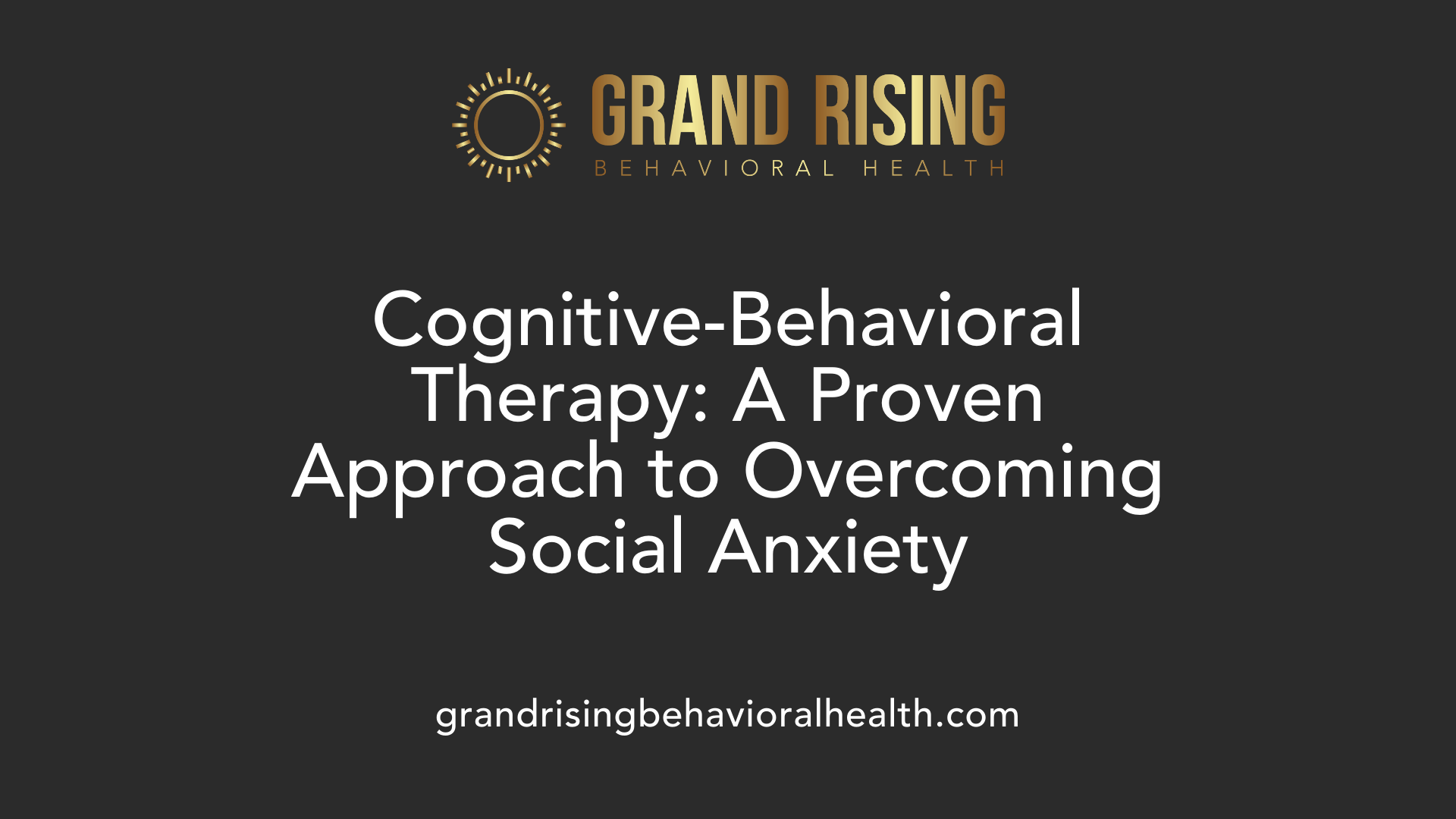
What role does cognitive-behavioral therapy (CBT) play in treating social anxiety?
CBT is the primary and most effective psychological treatment for social anxiety disorder (SAD). It helps individuals recognize and challenge the negative thoughts that fuel their fears. Through therapy, clients learn to reframe self-critical beliefs and develop healthier ways of thinking about social situations.
A typical CBT program involves structured sessions, often ranging from 12 to 20 weekly meetings. During these sessions, therapists guide individuals through exposure exercises, where they gradually face feared social scenarios, building confidence step by step.
In addition to exposure, CBT includes social skills training and behavioral experiments. These activities help clients practice and improve their communication skills and test out their negative assumptions in real-life contexts.
The combined approach of cognitive restructuring and behavioral techniques results in decreased avoidance behaviors, reduced social anxiety symptoms, and improved daily functioning. Many people experience long-lasting benefits, gaining better social confidence and improving their quality of life.
Core principles and techniques of CBT
CBT operates on core principles like identifying distorted thoughts, challenging their accuracy, and replacing them with more realistic beliefs. Techniques such as cognitive restructuring help clients examine evidence for and against their fears, promoting a balanced outlook.
Behavioral experiments involve testing negative beliefs through real-world activities, providing experiential evidence that fears may be overestimated. Mindfulness and relaxation exercises are also incorporated to help manage physiological symptoms of anxiety.
Behavioral experiments and cognitive restructuring
Behavioral experiments are practical activities that challenge anxiety-provoking thoughts and beliefs. For example, a person might practice making eye contact or initiating conversation to observe outcomes and gather evidence against their catastrophic predictions.
Cognitive restructuring involves identifying automatic negative thoughts, such as "Everyone will laugh at me," and systematically questioning their validity. Replacing these with balanced thoughts, like "Most people are understanding," empowers clients to approach social situations with less fear.
Effectiveness and structure of CBT programs
Research consistently shows CBT leads to significant and sustained reductions in social anxiety symptoms. The therapy's structured nature, emphasis on skill-building, and active homework assignments contribute to its success.
Therapists tailor programs to individual needs, focusing on specific social fears and triggers. This personalized approach ensures that clients learn relevant coping skills and gradually expand their comfort zones.
In summary, CBT’s combination of cognitive and behavioral strategies provides individuals with practical tools to manage social anxiety effectively, leading to improved confidence and social engagement.
Behavioral and Self-Help Strategies in Social Anxiety Management
What self-help strategies and coping mechanisms can individuals use to manage social anxiety?
People dealing with social anxiety can adopt various self-help strategies to lessen their fears and improve their social confidence. One effective method is gradual exposure — slowly confronting social situations that cause anxiety, starting with less challenging scenarios and gradually progressing to more difficult ones. This step-by-step approach helps desensitize the mind to social fears.
Practicing relaxation techniques is also recommended. Deep breathing exercises, such as diaphragmatic breathing, can calm physical symptoms like rapid heartbeat and sweating. Mindfulness exercises, including focusing on the present moment or describing your surroundings with all five senses, help individuals stay grounded and reduce overwhelming anxious thoughts.
Challenging negative thoughts plays a crucial role. Recognizing distortions like mind reading, catastrophizing, or overgeneralizing allows individuals to replace them with more balanced, positive beliefs. Developing social skills through training or role-playing can further boost confidence.
Support groups and self-help tools serve as valuable resources. Many find comfort in sharing experiences with others who understand their struggles. Self-help books, online courses, and mobile apps designed around cognitive-behavioral principles can guide users through exercises that foster coping skills. These resources provide structure, support resilience, and promote continual progress in managing social anxiety.
Evaluating Effectiveness: How Behavioral Interventions Make a Difference
Research provides strong evidence supporting the use of cognitive-behavioral therapy (CBT) and other behavioral treatments for social anxiety disorder. These therapies have been extensively studied and consistently show impressive results in reducing symptoms. For example, exposure therapy, a core component of CBT, helps individuals gradually confront social situations they fear, leading to decreased avoidance and increased confidence.
Outcome measures such as standardized anxiety scales, self-report questionnaires, and clinician ratings are used to assess progress. Many individuals experience significant improvements after 12 to 20 weekly sessions. Long-term benefits are common, with studies indicating that gains often persist months or even years post-treatment.
Personalized approaches are crucial. Tailoring therapy to address specific fears, social situations, and individual needs improves effectiveness. Ongoing support through booster sessions or support groups further helps maintain progress. Overall, evidence shows that behavioral health interventions are powerful tools in managing social anxiety, enabling individuals to participate more fully in social, academic, and professional life.
Supporting Resources and Community Initiatives
Individuals experiencing social anxiety can access a variety of support resources and community initiatives designed to foster understanding and aid recovery. Support groups, both in-person and online, serve as safe spaces where individuals share experiences, gain encouragement, and learn coping strategies. Prominent organizations like the National Social Anxiety Center facilitate connections among those affected.
Educational campaigns and community awareness programs play an essential role in reducing stigma and providing information about social anxiety disorder. These initiatives aim to educate the public, workplaces, and schools about recognizing symptoms and offering appropriate support. By increasing awareness, society becomes more empathetic and inclusive, making it easier for those affected to seek help.
Access to professional help is crucial for effective management of social anxiety. Qualified therapists offering evidence-based treatments such as cognitive behavioral therapy (CBT) are often available through clinics, hospitals, and online platforms. Digital tools, including mobile apps and online courses, complement traditional therapy by providing self-help techniques, mindfulness exercises, and virtual coaching.
Hotlines and advocacy groups also serve as immediate support channels for crisis situations and ongoing encouragement. These organizations promote societal acceptance and aim to ensure everyone has access to mental health resources, reducing barriers such as stigma and lack of information. Overall, combining community support, public education, and professional services creates a comprehensive approach to managing social anxiety.
Social Anxiety's Broader Impact and the Role of Behavioral Health
How does social anxiety impact daily life, and what role can behavioral health services play?
Social anxiety significantly influences many aspects of everyday functioning. Individuals often experience social isolation and difficulty maintaining close relationships due to their fear of judgment or rejection. This avoidance can extend to careers and educational pursuits, hindering opportunities for growth and success.
In school or work environments, social anxiety might cause individuals to avoid participation, leading to underachievement or missed opportunities. These behaviors can foster feelings of inadequacy and frustration, further impacting mental health. Physically, symptoms like blushing, sweating, trembling, and rapid heartbeat can interfere with performance and confidence.
Behavioral health services are vital in addressing these challenges. Psychotherapy, especially cognitive-behavioral therapy (CBT), helps individuals recognize and reframe negative thoughts while practicing social skills and exposure techniques. Medications such as SSRIs or SNRIs can reduce physiological symptoms and anxiety levels. Early diagnosis and personalized treatment plans are essential for effective management.
Beyond individual therapy, support groups and community programs promote social engagement and shared understanding. Long-term strategies include continuous skill-building, stress management techniques, and community involvement, which help individuals regain control over their social lives. Overall, behavioral health services play a crucial role in not only reducing symptoms but also fostering resilience, improving relationships, educational achievement, and career development.
Effects on relationships, careers, and education
| Aspect | Impact of Social Anxiety | How Behavioral Health Can Help | Example Interventions |
|---|---|---|---|
| Relationships | Difficulty forming and maintaining close bonds | Therapy for social skills and emotional regulation | Social skills training, couples therapy |
| Careers | Avoidance of networking or presentations | Exposure therapy, workplace accommodations | Role-playing, gradual exposure to professional settings |
| Education | Avoidance of class participation or social events | School-based interventions, counseling | Group therapy, peer support programs |
Addressing stigma and promoting mental health awareness
Raising awareness about social anxiety is crucial in reducing stigma and encouraging people to seek help. Educational campaigns, community workshops, and online platforms can dispel myths, promote understanding, and normalize treatment. Schools and workplaces can implement programs that foster supportive environments, educate staff and peers, and facilitate access to mental health resources.
Long-term management and recovery strategies
Managing social anxiety long-term involves a combination of ongoing therapy, medication when appropriate, lifestyle adaptations, and community support. Techniques like mindfulness, stress reduction, regular exercise, and social skills practice help maintain progress. Building a supportive network reduces feelings of isolation and empowers individuals to sustain their recovery.
In conclusion, social anxiety can deeply affect daily life, but with accessible behavioral health services and public education, individuals can achieve meaningful improvements. Continuous support and self-management strategies enable them to lead fulfilling social, educational, and professional lives.
Empowering Through Mental Health Support
Behavioral health services are essential in diagnosing, treating, and managing social anxiety. Through evidence-based therapies like CBT, medication, self-help strategies, and community resources, individuals can overcome fears, develop social confidence, and lead more fulfilling lives. Increasing awareness and reducing stigma remain key to ensuring accessible, effective care for all who need it.
References
- Social Anxiety Disorder: What You Need to Know
- Social Anxiety Disorder: Symptoms, Tests, Causes & Treatments
- Social anxiety disorder (social phobia) - Diagnosis and treatment
- INTERVENTIONS FOR ADULTS - Social Anxiety Disorder - NCBI
- Social anxiety disorder: Treatments and tips for managing this ...
- Social Anxiety: More Than Just Shy or Self-Conscious - Psychiatry.org
- Social anxiety (social phobia) - NHS
- Barriers to the Treatment of Social Anxiety - Psychiatry Online
- Social Anxiety and How to Manage It - Elliot Hospital
- Social anxiety disorder - Intermountain Health
More Resources
A team ready to start your journey.
Get in touch — today.
We are a safe space – a haven for exceptional individuals to receive discreet, personalized, in-person treatment and care.
.avif)




